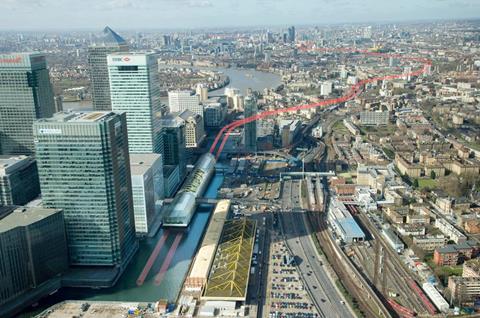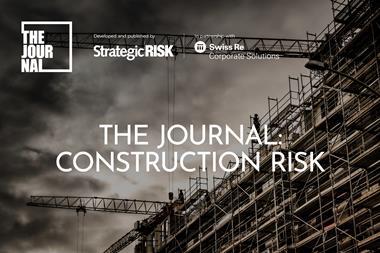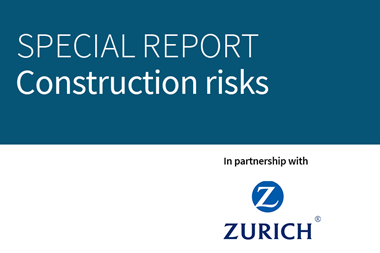Risk management has been central to the success of Europe’s largest infrastructure project, owing much to sustained engagement with the board and senior management

At the end of March, Europe’s largest construction venture, Crossrail, initiated the final stages of building a 42km tunnel network under London. Six years ago, the project began with the construction of eight new stations and servicing of 38 existing stations to accommodate the new railway. The completed railway will stretch from Reading and Heathrow to the west of the city, to Shenfield and Abbey Wood in the east.
The project is meant to increase London’s rail capacity by 10%, with the first trains expected to run through the central tunnelled section in 2018. According to Crossrail, the new railway will bring a further 1.5 million people to within 45 minutes of the city centre. Moreover, the development is likely to support regeneration and add £42bn (€57.6bn) to the UK economy.
The size, complexity and high-profile nature of the project has perhaps placed greater pressure on the risk management function to ensure the project is delivered on time and within budget. That pressure was intensified owing to the poor performance of a number of large UK infrastructure projects in the years prior to Crossrail, such as the Jubilee line extension, which scarred the industry, according to Crossrail head of risk management Rob Halstead.
Underground risks
Supporting the numerous parties involved at the different stages of the development has proved a difficult task for Halstead (pictured) and his team, and he says tunnelling beneath London’s complex underground infrastructure has been a particularly risky process.
“The tunnelling has almost been concluded. The scale and complexity of the project meant there was a lot of risk regarding interfaces between different parties on the project,” he says.
“A lot of infrastructure is underground, which must be protected when tunnelling underneath. In terms of risk, that presented us with a significant challenge at the early stages of tunnelling, owing to a number of critical infrastructures under the city.”
Having embarked on building 42km of tunnels in the summer of 2012, Crossrail announced at the end of March that the final two 750m drives had commenced between Liverpool Street and Farringdon stations. Although some of the risk team will continue to support those managing the final tunnel drives and the construction of new stations, Halstead’s main focus has now turned to ensuring the railway is built, tested, approved and handed over to its operator on time.
The complexity of the task facing Halstead is evidenced by the ongoing disruptions to train services passing through London Bridge – the city’s busiest station − after the government funded Thameslink Programme began redeveloping the railway operating system in September last year.
“Building the railway and bringing it into operation at the end of the job is a complex piece of work. We are looking ahead in our teams to help people think about what the risks are when introducing a new railway and help them manage those risks,” Halstead says.
Ensuring each stage of development is commenced on time and within budget on such a large scale would perhaps seem unrealistic. However, six years after construction commenced, Crossrail remains on time and on budget, despite its budget having been reduced by £1bn in the government’s Comprehensive Spending Review of 2010 – a reduction partly due to reduced risk associated with revised construction sequencing.
Board engagement
Everyone knows that managing risk is important, but the trick [to improving board engagement] is giving senior management something to engage with that supports that aspiration
Halstead says the success of the project so far owes much to quality engagement with the board and senior executives on risk management matters, which has been impressively high from the start. Reporting to the programme controls director, Halstead meets with the independent board five times a year and meets with senior executives every four weeks to discuss the risk management agenda.
Although a heightened interest in risk management at board and executive levels may stem from high external pressures and expectations, Halstead says the onus is firmly on the risk function to sustain that interest and maintain engagement.
“No senior manager will say that managing risk is not important. Everyone knows that managing risk is important, but the trick [to improving board engagement] is giving senior management something to engage with that supports that aspiration,” he says.
“Clearly, directors and executives are busy and have a high-level perspective of the project. Therefore it’s important to respond to that and give them information to which they can relate.”
The risk team drew together a set of risks in 2009-10 to engage the project’s board with risk management issues from a strategic perspective. The list remains relevant and is still in use and Halstead believes initiatives such as this can improve and sustain board engagement with risk management.
“Risk management tends to be dry, with lots of risk registers, analysis and academic reports. What we have done here is provide a process and a set of tools that the senior team can understand and relate to in order to help them manage risk,” he says.
“Increased board engagement requires the leadership to have the appetite [to engage in risk management], but the risk team also needs to give them something to sustain their interest and deliver value.”
Halstead finds himself being consistently stretched by the board and executives and he recognises this as a positive endorsement for the importance of risk management. With risk management a key focus for the board at Europe’s largest construction project, the Crossrail project is perhaps a triumph for the wider risk community in terms of enhancing professional recognition for risk managers.




















No comments yet